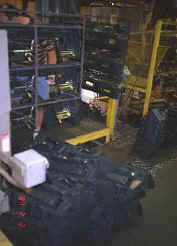
...get rid of what is not needed!

If unsure, tag items for later evaluation... if unclaimed / or unwanted give them a 'dump by' date
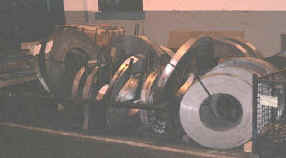
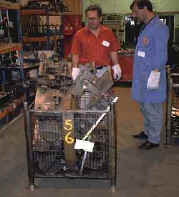


...which takes us on to Step 2
| 5Cs for Workplace Organisation | Note that the photographs in these pages have been optimised for speed of download rather than clarity! |
| The five-step process (Japanese '5S') | |
|
The five step approach goes beyond simple 'housekeeping' to provide the basis for all sorts of improvement systems, but especially TPM |
|||||
|
5. Custom & Practice |
|||||
|
4. Conformity |
(5.shitsuke) |
||||
|
3. Clean & Check |
(4.seiketsu) |
||||
|
2. Configure |
(3.seiso) |
||||
|
1. Clearout |
(2. seiton) |
There are many alternative translations of the Japanese 'S' words into English 'S' words! These 'Cs' best convey the meaning and the spirit into English. |
|||
|
(1. seiri) |
|||||
| The benefits: | ||
|
|
|
|
Step 1: Clearout |
||
| Determine what is needed and what is not needed: tools, materials, packaging.... | ||
 |
...get rid of what is not needed! |

If unsure, tag items for later evaluation... if unclaimed / or unwanted give them a 'dump by' date |
 |
||
 |
 |
|
| When we have got rid of all the clutter, we need to consider the best place for what is needed... |
|
...which takes us on to Step 2 |
|
2. Configure |
|||||
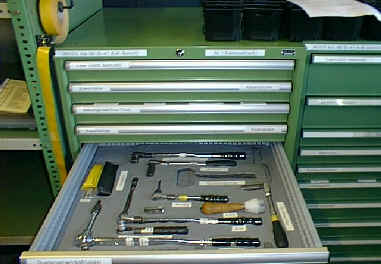 |
Determine a place for everything, and make it easy to keep it in it's place. Assign names, addresses, routes, quantities, etc. |
 |
|||
|
|
|||||
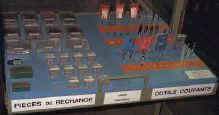 |
|||||
|
|
 |
||||
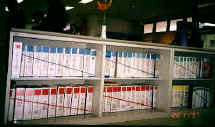 |
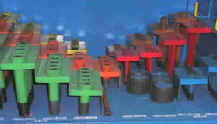 |
||||
| 3. Cleaning & Checking |
|
Cleaning enforces close scrutiny - simply 'inspecting' and using a checksheet isn't good enough! All sorts of problems are encountered: we can start to understand some of the causes and start to put things right. |
|
|||
|
Heavy soiling |
Difficult to access |
|||
|
Loose bolt |
Clutter in electrical box |
|
||
 |
Oil leaks; loose hose couplings |
Broken gauges |
||
|
Damaged guards |
Worn couplings |
|||
|
4. Conformity |
||
 |
Having established tidier and cleaner
equipment, facilities, and workplace, we want to keep it that way! 'The
norm' must be made obvious, and go beyond what things are and where they
belong - we need to include aspects such as settings, temperatures,
pressures and so on. |
|
|
Checksheets help to ensure that normal condition can be recognised, and that it is monitored at regular intervals. Method standards ensure that checks are carried out in a pre-determined way which is safe, ensure quality of checking, and that they are carried out with the minimum time and effort. |
 |
|
 |
 |
|
|
We need to ensure people have the means to maintain conditions... |
.. they need time & resources |
 |
 |
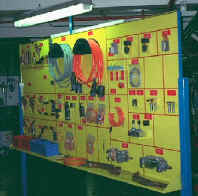 |
|
As with any standards, there need to be systems in place to ensure that people are trained in them, that they adhere to them, and that the standards are effective in achieving the desired results. |
|
|
 |
Adherence can be charted - or simply take pictures of actual vs. expectation. It is also illuminating to measure the effects of 5C on performance - results demonstrate that the investment is well worthwhile! |
|
| 5. Custom & Practice | ||
|
By the time clear standards are in place around the plant, and everyone is conforming to these, many of the problems that used to arise will be no more. The new challenge is to strive for even better Quality, Cost and Delivery achievements whilst developing a workplace that is truly World Class! |
 |
|
 |
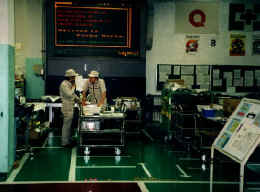 |
|
|
The web site dedicated to improving manufacturing competitiveness genba-kanri.com |